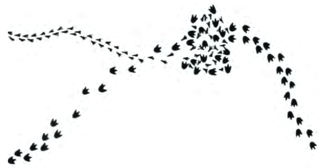Science
The question of the day is, “What is science?”.
Where does science fit? Why does science exist? Why do you have an entire class about science in school? How is science useful for the rest of your life?
So give it a shot.
In your lab notebook: With your group, come up with a definition of science.
Table of contents
Observation and Inference
Observation means to look at the world around you, what do you see? Inference means to take what you see and make a guess. It is a lot like how gossip works, when you see someone else do something, you then make up a reason for why they are doing it. Gossip is making inferences about things you observe. Another way to think of inference is like a prediction or assumption
Activity - Observations and Inferences
Practice making observations and inferences by writing out the chart below either in your lab notebook, on a blank sheet of paper, or there is a handout that can be printed.
First come up with 10 observations either about the room or something else you have seen recently. Then, come up with your inference. Next, fold the paper so that your inference is covered up and you can only see the observation and your partners inference
| Observation | Your inference | Partners Inference | |
|---|---|---|---|
| The ground is wet | It must have rained last night. | They must have watered the yard last night. | |
| 1 | |||
| 2 | |||
| 3 | |||
| 4 | |||
| 5 | |||
| 6 | |||
| 7 | |||
| 8 | |||
| 9 | |||
| 10 |
When you are both done, compare your inference with your partner and talk about the differences.
Activity - Tracks
Look at the image below and write up a story based on it. 
When you are done, compare your story with those in your group.
In your lab notebook: Why do you think you and your partners did not agree on either your inferences or story about the tracks?
Models
Models are created to explain observations. Good models provide clear explanations for all known data and make predictions for new observations. New observations either support and strengthen the model or make us doubt the model.
One way that scientists improve a model is by letting other scientists look at it and give their opinion about the model. Many breakthroughs have come as the result of one scientist providing key insights to another.
Activity - Jumping Shampoo
Watch the demonstration done by your teacher.
- Create a model that explains this strange phenomenon (by yourself).
- Discuss your models with your group.
- Create one model for your group.
- Share your group’s model with the class .
- Are there experiments that you could do that would distinguish between your models?
Activity - Why Doesn’t the Moon Fall
Watch the following video where Alice and Bob come up with a model for why the moon doesn’t fall.
With your group discuss these three questions (after a while we will talk as a class):
- Describe the model that Alice and Bob came up with.
- Do you agree with their model?
- Can you find any flaws in their thinking?
Activity - The Black Box
Watch your teacher interact with the black box.
- Sketch a model of what is happening (by yourself).
- Exchange your model with a classmate who has a different model.
- Discuss your models and suggest improvements to each other’s work.
- Is there an experiment that you could do to distinguish between your models?
Reflection
In your lab notebook (or on a sheet of paper with your name on it) answer these three questions.
- How does it feel when someone criticizes your model?
- Did your model improve because of the criticism?
- What role does experiment play in developing good models?
Activity - The Teacher
Go around the room and make observations and then inferences about your teacher. Each student only gets one yes or no question to ask the teacher. Record these and turn them in as you leave the room at the end of class.
References
The activites and demonstrations were inspired by or taken wholey from, Process of Science kit from Perimeter Institute.
Prep
- Shampoo
- Black box
- Paper for students without lab notebooks
- Lab notebooks for students that wish to take one
- Handouts - enough for everyone